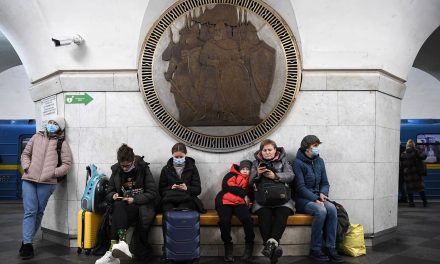
Every 10 years, legislators or appointed commissions across the country take the latest U.S. census data and redraw the boundaries of electoral districts to reflect the shifts of population. Too often, those new maps protect incumbents and partisan politics, not the interests of voters.
In 2022, however, the redistricting cycle has been marked by a groundswell of citizen engagement to create fair maps that give greater political clout to communities of color. In many states, a history of gerrymandering along political and racial lines has led to a lopsided concentration of power, which activists are looking to correct. Unfair redistricting this cycle has led to court challenges in a dozen states, and often, those are the same states that have adopted laws making it harder to vote after the 2020 election.
The double assault of unfair maps and voter suppression is leading to renewed calls on Congress to pass voting rights legislation before the 2022 midterm election. Senate Majority Leader Chuck Schumer has pledged to try for a fifth time to get legislation protecting voting rights approved, and President Biden has called for changes to Senate rules to enable that. Those efforts may have been doomed by Democratic Sen. Kyrsten Sinema’s opposition to changing the chamber’s filibuster rule.
“Time is definitely running out on having those protections matter for 2022. It’s still incredibly consequential,” said Adam Podowitz-Thomas, senior legal strategist with the Princeton Gerrymandering Project.
Voting rights advocates have said that in addition to highlighting the need for federal legislation, takeaways from this redistricting cycle include the importance of community involvement and evidence that not all redistricting commissions provided the fairer process they originally envisioned.
There also has been significant pushback on the new drive to create fair electoral maps. Republican lawmakers in states like Texas, North Carolina, and Ohio ignored citizen input and drew lines that are fueling lawsuits over claims of racial and partisan gerrymandering. In Illinois, Democrats that control its General Assembly drew new legislative districts that the Mexican American Legal Defense and Educational Fund and others claimed diluted Latino and Black voting power in some urban areas. In December, however, a federal court upheld the Illinois maps.
From the start, the attempt to create fair voting maps has faced numerous challenges. The U.S. census data needed to draw maps and to determine which states gained or lost congressional seats was delayed by the pandemic, and there was an attempt by the Trump administration to include a question about citizenship status—seen as a deliberate attempt to suppress the counting of Latino citizens. A majority of legislatures are controlled by Republicans unfriendly to voting rights, and they have moved aggressively ever since a requirement for states with a history of discriminatory practices to get proposed maps pre-cleared by the U.S. Department of Justice — a key legal tool for battling racial gerrymandering — was tossed out by the Supreme Court in 2013.
“The harms that communities of color are going to face under this cycle are pretty stark,” Podowitz-Thomas said. “The evisceration of pre-clearance by the Supreme Court encouraged a lot of states to push the boundaries on what they can get away with as far as racial gerrymandering.”
While pushing for the federal bills, voting rights advocates are moving forward with court challenges to many of the maps already approved. “We’re preparing for the worst,” said Stuart Naifeh, manager of the NAACP Legal Defense and Educational Fund Redistricting Project, which sued Alabama in November. According to the suit, “The State of Alabama carries a sordid record of using racial discrimination to maintain the political power of its white citizens.”
Already, court rulings are helping to overturn unfair maps. On January 12, the Ohio Supreme Court struck down as unconstitutional gerrymandering the legislative maps drawn by the state’s new redistricting commission. The Ohio Redistricting Commission, which is majority Republican, now has to draw new maps while it awaits decisions on additional lawsuits challenging its legislative and congressional maps in federal court.
According to the Brennan Center for Justice, a total of 34 cases in a dozen states were filed as of January 5, 2022, challenging congressional and legislative maps as racially discriminatory or partisan gerrymanders. Fifteen of these cases are pending in state court and 19 in federal court, including a lawsuit brought by the U.S. Department of Justice in December 2021 against Texas over racial gerrymandering.
In the 2011 cycle, All About Redistricting, a site created by election law scholars as a clearinghouse of redistricting information, found that courts overturned congressional plans in five states and drew the lines themselves in 12 states. Courts also struck down all or part of state legislative maps in 13 states drawn in 2011, and drew the lines themselves in eight states.
“I view the court process as a continuation of the redistricting process,” said Kathay Feng, the national redistricting manager of Common Cause.
Unfortunately, some states do not seem to mind being sued. North Carolina’s maps were among those struck down in the last cycle. Yet, Feng said it was lawmakers who again approved maps that already were being challenged in new lawsuits.
“They cracked and packed Black voters, resulting in the dilution of their votes,” said Feng of North Carolina’s most recent maps, referring to practices in which communities of color are “cracked,” or split up to reduce their political power, or “packed” into the same district in greater numbers than necessary to reduce their power in surrounding districts. “They held sham hearings where locations were moved or, in one instance, the doors to the building were locked. All in all, a bad process.”
While legal challenges wend their way through the lower and state courts, elections could end up being held based on maps that are later thrown out, as happened in North Carolina between the enactment of the discriminatory maps in 2011 and when they were tossed out in 2017. With the 2022 primary season about to begin, that’s a major concern for voting rights advocates.
“The rush is on in a number of states to get courts to weigh in and resolve some of these claims and ideally enforce the protections that should have steered the map drawers toward producing fair maps,” said Yurij Rudensky, a redistricting counsel in the Brennan Center’s Democracy Program.
Courts are also increasingly taking on another role in redistricting — drawing the maps when commissions or legislatures fail to reach consensus. This happened in several recent redistricting cycles in Minnesota, when the legislature became deadlocked along party lines, and it is expected to happen again this year. It also happened in Virginia, where the state’s new redistricting commission ended up deadlocked in 2021.
“The Virginia Redistricting Commission was half politicians and half citizens. It was a flop,” said Podowitz-Thomas. “A lot of folks are attributing the ultimate failure in their task to the presence of politicians who couldn’t put the interest of the citizens ahead of their political interests.”
When the Virginia commission couldn’t reach the necessary bipartisanship to move forward with maps, the state Supreme Court hired special masters to take over the job. Those maps, released Dec. 9, “at first glance appear to be pretty fair,” said Rudensky. “I wouldn’t say that the Virginia process was ideal, but the safeguards are working. It’s a demonstration that courts can do a good job of drawing districts.”
In its memo to the Virginia Supreme Court, the special masters appointed to draft maps gave a shoutout to citizen input it received: “We carefully reviewed the communities of interest submitted by Virginia’s residents to the Virginia Redistricting Commission. While it was not possible to respect every user-submitted community, we did attempt to incorporate them where possible. Second, we reviewed Virginia data from Representable, a non-profit organization that allows individuals to draw their communities of interest and then stores those communities of interest in digital form.”
Michaela Daniel, Representable’s director of outreach and partnerships, said its free open-source mapping tool was used to submit at least 3,000 maps in different states. “To see that wave of participation is really compelling, and these maps are mostly coming from people with no previous knowledge of redistricting,” said Daniel.
The impact of democratizing the redistricting process goes beyond the citizens’ influence or lack of influence on the final maps in their jurisdictions.
“Even if some of the community mapping didn’t fold into maps that were ultimately gerrymandered, like in Ohio,” said Rudensky, “these efforts provided an important barometer against which the official maps could be judged, and deprived the politicians behind these plans from being able to control the narrative with post hoc justifications for what are clearly partisan gerrymanders.”
Legislatures still have the final say on maps in a majority of states. In 34 states, lawmakers have primary control of their own district boundaries, and 39 legislatures have primary control over congressional districts in their states (including in the six states that have just one congressional district), according to All About Redistricting. Nineteen states had some form of redistricting commission this cycle.
“I am skeptical commissions are the answer,” said Naifeh of the NAACP Legal Defense and Educational Fund. “It’s hard to know whether the decisions they make will really be as untainted by politics as people intended when they created them. The other issue is that commissions are not necessarily as attuned to racial equity when drawing maps as you might hope. Often, their goal is to try to make districts that are politically competitive, but that doesn’t necessarily mean they are paying attention to the impact on communities of color.”
Naifeh stresses the need for federal voting rights legislation. “The clock is definitely ticking,” he said. “Passage of the John Lewis Act would allow the Department of Justice to review some of those maps in places that have continued to discriminate or tried to impair voting rights.”
Feng agrees that not all commissions work well. For example, in some states with advisory-style commissions that turn over final map decisions to the legislative branch, the lawmakers may ignore the commissions’ work and revert to their usual politicking. “Places like Utah and New Mexico had commissions drawing proposed maps that were ultimately thrown into the trash can and redrawn by their state legislatures. We had hoped advisory commissions might at least be a half-step.”
But Feng sees progress in states like California, Colorado, Michigan, and Arizona, where redistricting commissions were designed to be more independent and actively reach to get public input. In Michigan, she said, the redistricting commission held over 100 meetings and 200 presentations and received 21,000 public comments. In California, its commission welcomed alternative maps submitted by individuals and more than 36,000 public comments.
The California Citizens Redistricting Commission wrapped up map drawing in the final week of December. This was the second cycle the state used the commission, composed of five Democrats, five Republicans, and four unaffiliated Californians.
“California was a success,” said Feng. “They boosted Latino representation in a state where 40% of the population is Latino. There was significant public input given and significant changes in response to the testimony.”
By contrast, Republicans controlled the Ohio Redistricting Commission and drew maps to protect their control of the legislature. The Ohio Supreme Court’s 4-3 ruling against those maps suggests that voters, who approved creation of the commission in a 2015 vote, have pursued those changes to make the commission more independent.
“Having now seen firsthand that the current Ohio Redistricting Commission—comprised of statewide elected officials and partisan legislators—is seemingly unwilling to put aside partisan concerns as directed by the people’s vote, Ohioans may opt to pursue further constitutional amendment to replace the current commission with a truly independent, nonpartisan commission that more effectively distances the redistricting process from partisan politics,” Chief Justice Maureen O’Connor wrote in a concurring opinion.
Rudensky of the Brennan Center said lessons learned from this cycle include the need for commissions to adopt two key design features: First is to include tie-breaking independent members to build consensus so politics won’t derail the process, as happened in Virginia. Second is to have a screening process that selects people at arm’s length from partisan politics to avoid Ohio’s debacle.
“A smoother, more transparent, and ultimately much more fair process may not produce the perfect maps, but certainly not the sorts of flawed schemes that we’re seeing produced under single-party control,” said Rudensky.
“I hope that folks don’t become disenchanted with involvement in the political process just because of the way some of these maps are being drawn,” said Podowitz-Thomas. “Nobody should count themselves as living in a state where reform is not possible. Reform is possible everywhere. That takes the right combination of luck and hard work, but it’s possible.”
Linda Kramer Jenning
Еdmоnd Dаntès and Jоnаthаn Sіmcеe
Originally published by YES! Magazine as Citizens Wanted Fairer Electoral Districts. Politicians … Not So Much















